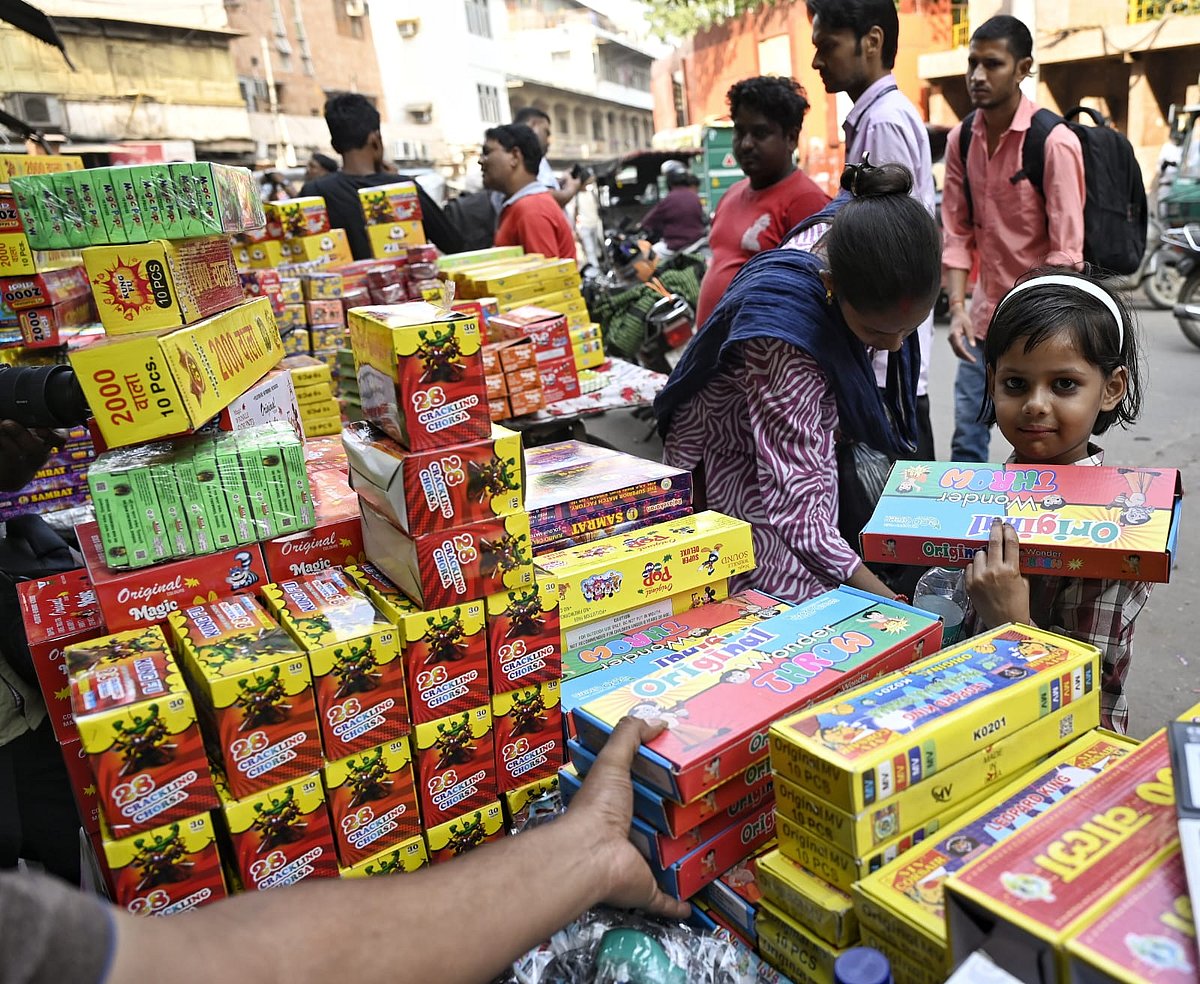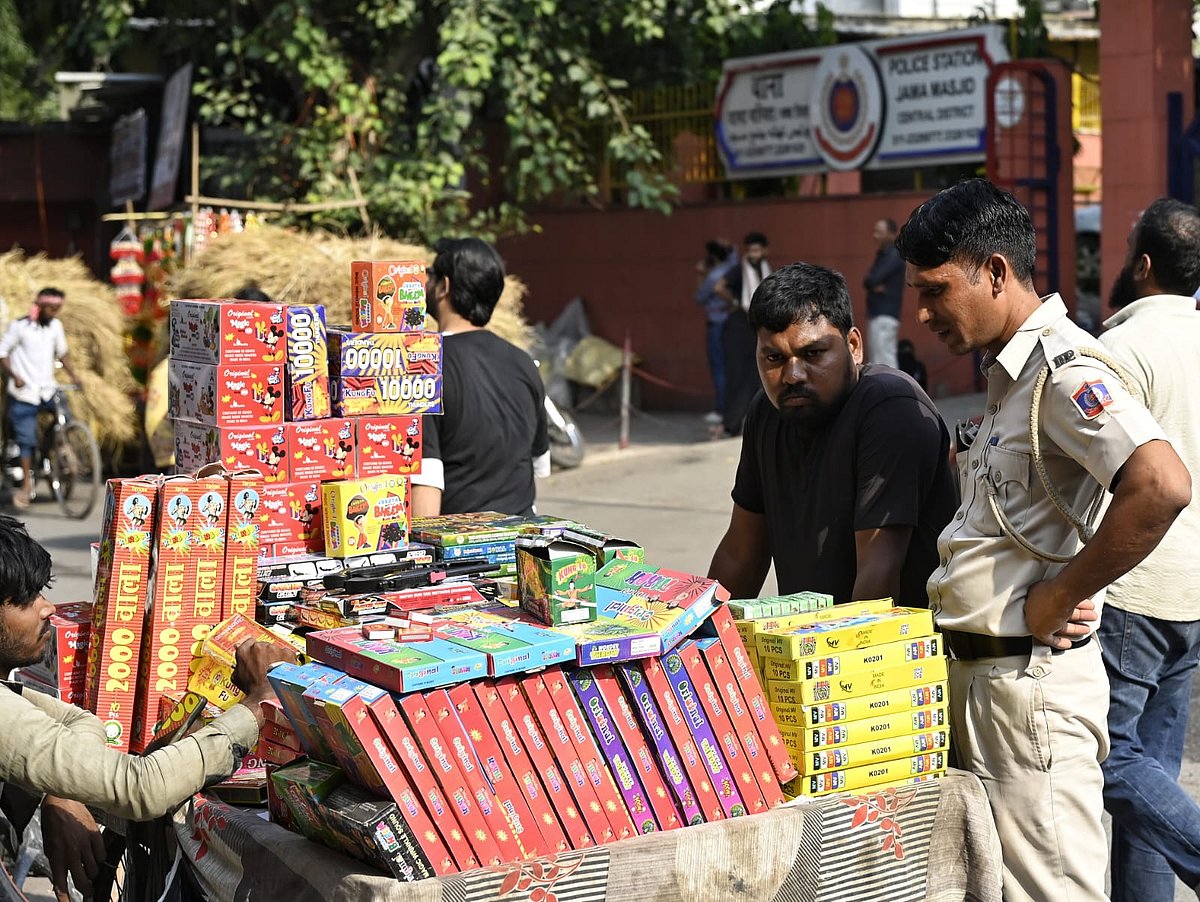‘Green crackers’: A rebranded threat to public health?
These ‘clean alternative’ fireworks are no real solution to Delhi-NCR’s toxic air problem, and experts say it is time to say goodbye to crackers altogether

Every Diwali the National Capital Region (NCR) witnesses a familiar ritual — not just of lights and festivities, but of rising air pollution, health advisories, legal battles over firecracker bans and widespread defiance of those very bans.
In recent years, the arrival of so-called ‘green crackers’ promised a cleaner celebration — but scientists and public health experts now say they are just a well-packaged hoax.
Developed by the Council for Scientific and Industrial Research (CSIR) and the National Environmental Engineering Research Institute (NEERI), the green crackers use smaller shell casings and less quantity of chemicals such as barium nitrate, sulphur and potassium nitrate. Offered as an eco-friendly alternative, scientists say they may cut emissions by just about 30 per cent, indicating this to be a largely cosmetic tweak.
What do they mean it’s greenwashing?!
Dr G.C. Khilnani, member of WHO’s Global Air Pollution and Health technical advisory group, points out that some of the conventional crackers emit smoke equivalent to 450 cigarettes. The popular sparklers emit 10,390 toxic particles in the barely 2 minutes they burn. “Cutting that by 30 per cent still leaves you with over 300 cigarettes worth of pollution per burst. That’s not ‘green’. That’s a gimmick,” he says.
Worse, a CSIR-NEERI study in 2023 found that 70 per cent of the ‘green crackers’ available in the market were fake — just conventional fireworks with a cosmetic label change to evade bans and boost sales.
The use of potassium nitrate, ammonium nitrate and aluminium powder in these fireworks pose a serious health risk. Ammonium nitrate is, in fact, banned in several countries because of its explosive potential. When these crackers burn, they release tiny metallic particles in the air as well, which can cause not just breathing trouble but inflammation in the lungs, besides being harmful for our eyes and skin.
Despite being one of the most polluted cities in the world, the air in Delhi and NCR continues to reach new depths of toxicity between October and January — which coincides with festivities, weddings and the post-harvest stubble burning... as well as an influx of tourism.
Why no ban, then?
A ban, first total and then partial, on conventional crackers has been in place since the winter of 2020 and the arrival of ‘green crackers’ held out the promise of a cleaner Diwali.
In a significant judgement, the Supreme Court on 15 October permitted the sale and bursting of green firecrackers in Delhi NCR for specific hours before and on Diwali. It has also permitted the sale of green crackers from 18 to 21 October.
Though Chief Justice of India B.R. Gavai said, “We have to take a balanced approach, permitting it in moderation while not compromising with the environment,” it is worth mentioning that the Air Quality Index (AQI) post-Diwali in the NCR was between 550 and 806 in 2024 (higher the AQI, higher the pollution). In Ghaziabad, it was 893, and in Vaishali, 911. This was despite the court-imposed restrictions.

A survey of 21,000 NCR residents by the digital platform Local Circle recorded that 34 per cent of asthma patients complained of breathing trouble post-Diwali, while 69 per cent admitted to a sore throat and cough. Some 62 per cent experienced a burning sensation in their eyes.
Other studies conducted in Delhi, Chennai and Hyderabad over the past few years show that green crackers too result in an increase of PM2.5 and PM10 levels by 20–25 per cent, explaining much of the post-Diwali trauma. The air the day after has been found to be as suffocating as conventional crackers. Vulnerable groups like the elderly, children and pets bear the worst of the brunt.
Another downside is that the green crackers continue to add to the noise pollution, with decibel levels recorded between 110 and 125 — way higher than the permissible 90 decibels.
So what’s up this Diwali?
Three categories of ‘green crackers’ have hit the market this Diwali.
Crackers the emit vapour to suppress particulate matters;
Less noisy crackers with limited particulate emissions;
Crackers using magnesium or minimal aluminium.
The catch is that the cost of producing green crackers is higher — yet enforcement remains weak. This encourages black market sales, mislabelling and widespread public confusion.

Several experts describe ‘green crackers’ as an oxymoron even as a concept — a contradiction in terms. Even if ‘green crackers’ cause 30 per cent less air pollution, their extensive use neutralises the benefits as well. One kilo of green crackers produces 1.5 kg of carbon dioxide and 200 grams each of chloride, ammonia and nitrous oxide. That’s hardly a logical definition of ‘green technology’ in any other industry!
The argument that the practice of bursting crackers is part of an ancient culture does not stand historical scrutiny, by the way. It is possible that people lit lamps or bonfires in the past, but modern chemical-laden fireworks are a recent innovation.
Experts say it is time to say goodbye to crackers altogether, therefore. There are modern, safer options available in the form of electronic crackers, laser shows or drone displays to make our festivities safer, healthier — and a spectacular celebration of light.
Follow us on: Facebook, Twitter, Google News, Instagram
Join our official telegram channel (@nationalherald) and stay updated with the latest headlines
